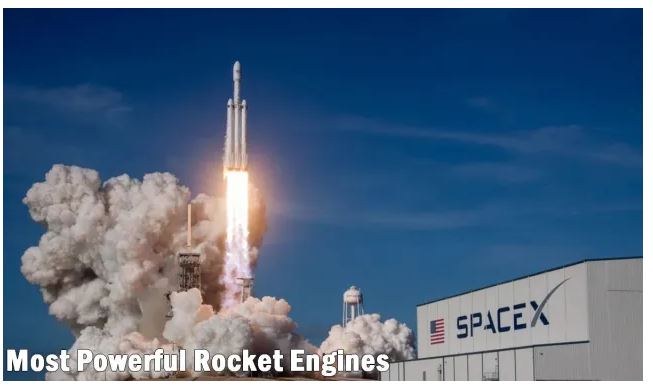
Top 10 Most Powerful Rocket Engines:
10. KVD-1
The KVD-1 engine was a top-stage cryogenic engine developed by the Isayev Design Bureau of Russia in the early 1960s. Its maiden flight was on 2001-04-20. It is a modified version of the RD-56. Although it was retired on 2010-12-25, it was able to create a thrust of 69.6 kN in a vacuum.
9. LE-7
This engine was produced in Japan with design and production work done almost domestically in Japan. It was designed by JAXA at Mitsubishi Heavy Industry. This bad boy was capable of producing 1,078 kN thrust at no load and 843.5 kN at sea level. It weighs around 1,714 kg. Its thrust was sufficient for use in the H-II, but it was still replaced by a more advanced and better LE-7A engine.
8. RD-253
The RD-253 is a liquid propulsion rocket engine designed by Energomash and V. glushko. Manufactured in Proton-PM it was capable of producing a thrust of 1,630 kN at no load and 1,470 kN at sea level. It weighs around 1,080 kg and was dignified enough for its first flight in 1965, its successors were RD-254, RD-256, RD-275, and RD-275M.
7. Rocketdyne F-1
The F-1 rocket engine was developed by Rocketdyne in the United States in the late 1950s. It was used in the Saturn V rocket in the 1960s and early 1970s. All five F-1 engines were used in the first S-IC stage of each Saturn V launch, which served as the primary launch vehicle in the Apollo program. It was capable of producing a force (thrust) of 7,700 kN at no load and 6,770 kN at sea level and weighs around 8,400 kg. The F-1 remains the most powerful single-combustion chamber liquid rocket propellant engine ever developed.
6. RS-27
RS-27 was a liquid-powered rocket engine developed in 1974 by Rocketdyne in the United States. It was a successor to H-1. With the addition of components from the venerable MB-3 and H-1 designs, the RS-27 was modernized and a completely different design was used for two decades. It was a large engine 1.07 meters wide and 3.69 meters long. It was capable of producing 1,023 kN thrust at no load and 971 kN at sea level. Even though the engine was capable of producing such thrust, it was replaced by RS-27A and Rs-56.
5. Vulcain-1
Vulcain-1 is part of a large group of rocket engines built in Europe. Its development began in 1988 and it completed its maiden flight on June 4, 1996. It produced 1,140 kN in no-load during its flight. Still, he retired with his last flight on December 18, 2009.
4. RD-180
It is a rocket designed by NPO Energomash and built-in Russia. It was put into use for the first time on May 24, 2000. Although it was replaced by the RD-170, it is still in use and produces a thrust equal to 4.5NM at empty and 3.83NM at sea level. It is a massive engine that weighs around 5,480 kg.
3. RS-25
The Aerojet Rocketdyne Rs-25 is more commonly known as the space shuttle main engine used on NASA’s space shuttle. Its origin dates back to the United States. It was manufactured by Rocketdyne, Pratt and Whitney, and Aerojet Rocketdyne. It first flew on April 12, 1981. While it is out of service from STS, it is currently being tested for SLS. It is capable of creating a thrust of 2,279MN at empty and 1.86MN at sea level. It is the predecessor of the HG-3.
2. NK-15
NK-15 was a rocket built and designed in the late 1960s by the Kuznetsov Design Bureau. It came to life in the Soviet Union. The NK-15 rocket engine was among the most powerful kerosene rocket engines at the time it was built, with high specific impulse and low structural mass. It was intended for the unfortunate Soviet N-1 Moon rocket. It was capable enough to create a force of 1,753 kN in a vacuum and 1,505 uneven after that force was replaced by NK-33.
1. Merlin
It is a family of rockets developed by SpaceX for application in the Falcon 1, Falcon 9, and Falcon Heavy launch vehicles. Created in the United States of America. It is currently active and is capable of delivering 981 kN of force at no load and 854 kN at sea level. Merlin engines use RP-1 and liquid oxygen as rocket propellants in the gas generator power cycle.





